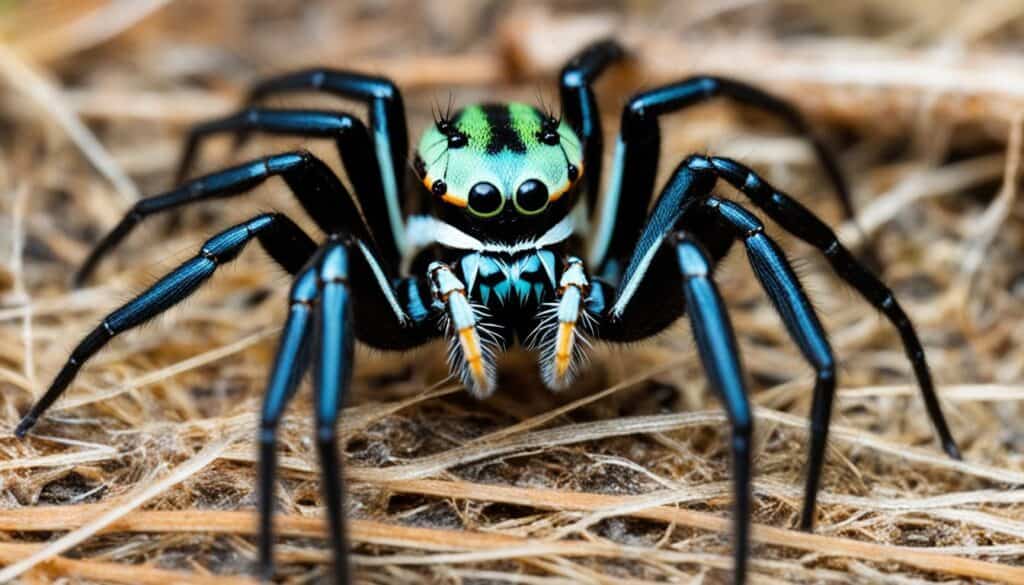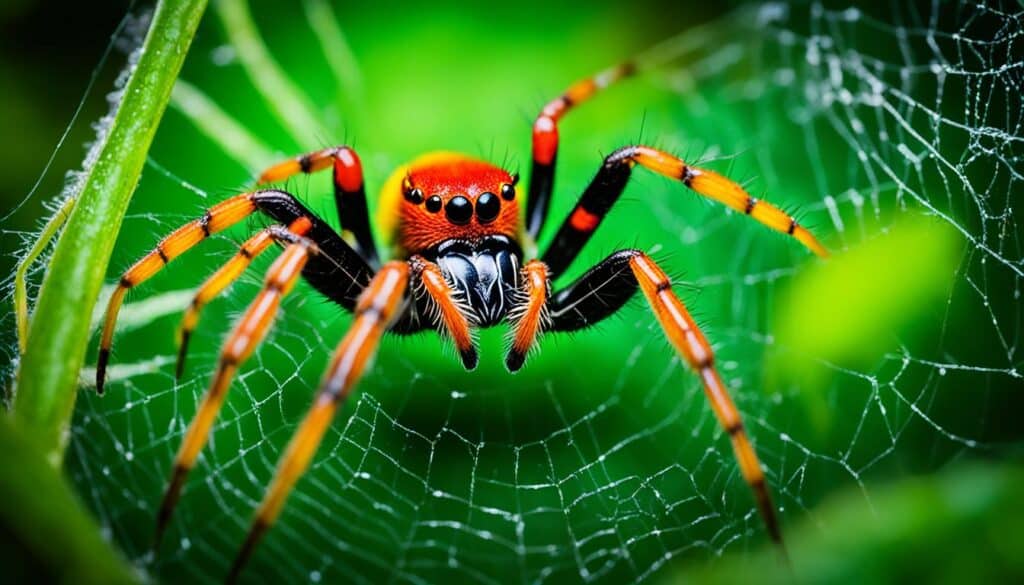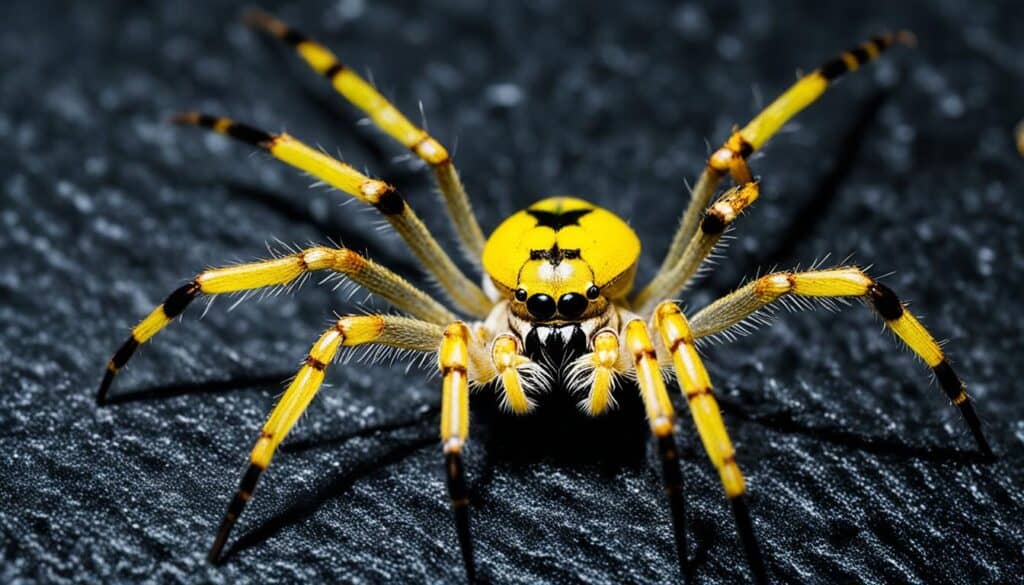Have you heard about the Joro spider? It’s a new spider in the U.S., and its diet is as varied as the foods at a food truck festival. These spiders, found on the East Coast, feast on insects like stink bugs and Monarch butterflies. This info comes from researchers at Clemson University. These spiders take the “you are what you eat” saying seriously, enjoying various flying insects. So, what foods do these eight-legged creatures choose as they move into our yards, stretching from Georgia to Ohio and more?
The Joro spider, or Trichonephila clavata, first showed up in the U.S. in 2013, in Hoschton, Georgia. Since then, they’ve been seen enjoying life across the East Coast. Places like Florida, Kentucky, and even up to West Virginia have spotted them. Thanks to their ability to balloon, they can “parachute” far distances. This makes them the frequent flyers among spiders.
Even though Joro spiders have venom, they’re not a threat to us. Their bites hurt less than a bee sting and don’t happen often because they’re shy. So, are Joro spiders good or bad for us? Learning about their diet is key to understanding their effect on our gardens and environment as they spread northward.
Key Takeaways
- Joro spiders eat various flying insects, like stink bugs and Monarch butterflies.
- They were first seen in Georgia in 2013 and have since expanded across the East Coast.
- They don’t usually bite humans, and when they do, it’s less painful than a bee sting.
- Female Joro spiders can be as big as a human palm, making them easy to spot.
- Their presence could help control other pest populations, affecting local ecosystems.
Introduction to Joro Spiders
Let’s explore the world of the Joro spider, or Trichonephila clavata. It’s known for its striking yellow-and-gray body! Originally from East Asia, this native species landed on the East Coast. Since its first sighting in Georgia in 2014, it has spread to several states. These include Alabama, Florida, Tennessee, Virginia, and others. What a spread!
Joro spiders are known for their large size and unique colors. Fully grown females can have a leg span of three inches. That’s quite big! Males are smaller with a brownish color. What’s fascinating is their “ballooning” method to move around. It’s like they’re skydiving without parachutes!
The Joro spider is considered an invasive species. However, it’s not dangerous to humans. Their bite might scare you, but it only causes mild reactions. They focus more on spinning webs than biting people.
- Grows up to three inches in leg span
- Primarily found in Georgia, Alabama, Florida, and neighboring states
- Travels using “ballooning”
- Non-threatening to humans
Identifying a Joro spider is easy. Look for their unique colors and size, especially in the East Coast. You might see their webs in trees or around your house. They’re not aggressive and won’t likely invade your home. Experts aren’t worried about controlling them right now. Controlling something that can “parachute” to new places is hard!
Joro Spider Diet
Let’s dive into what Joro spiders eat. They wear bright yellow and black and eat various insects caught in strong golden webs. Clemson University found out they eat almost any insect. So, these spiders aren’t picky about their meals.
They enjoy stink bugs, Monarch butterflies, and more. They also eat cockroaches and wasps. With such a diet, they might control some pest populations. Think about the invasive spotted lanternfly! Yet, we’re still learning about their effect on the ecosystem.
The Joro spiders are busy hunters. They might make your yard an insect buffet. Researchers found 50 of them in a small area. That means there’s about one spider every two yards. They’re like a cool, tiny food truck for insects. Enjoy your meal, spiders.
Impact on Local Ecosystems
The Joro spider arrived around 2013, sparking interesting talks about their ecosystem impact. These spiders have quickly spread across Georgia and the Southeast. Their success comes from a fast metabolism and a heart rate 77% higher than their relatives.
They can even survive short freezes and severe storms. It’s clear, these spiders are survivors.
Imagine spiders that glide through the air, covering up to 100 miles. That’s what Joro spiders do, using their silk like parachutes. They also catch lifts on cars, making their way far and wide. There’s a story about one reaching Oklahoma by car!
The University of Georgia thinks we should study these spiders more to understand their impact. Are they shaking things up, or just settling in? Their hunting skills and resilience suggest they could live nearly all along the Eastern Seaboard.
In Japan, Joro spiders fit right in, just like they’re doing in the U.S. They’re making themselves at home. They feed on mosquitoes and harmful bugs, adding complexity to our ecosystems. It’s unclear if they’ll help or hinder our natural balance. It’s like procrastinating on taxes—it’s a mystery until the end.
Behavior and Habitat
Have you ever thought about being a Joro spider? These spiders are like tiny acrobats. They use their silk to catch the wind and glide away, traveling up to 100 miles. It’s their way of taking a road trip, but without cars!
They came to the U.S. around 2013 or 2014, hitching a ride on container ships from Asia. Now, they live in places like northern Georgia and South Carolina. They don’t waste time; they quickly start building their incredible webs. Their webs are so strong, they can even hold small birds for a bit.
Joro spiders don’t mind where they live. They’re happy in cities or the countryside. They make their homes everywhere, from traffic lights to trees. The female spiders, with their bright colors, stand out more than the smaller, shy males.
Their romantic life is short but interesting. By early September, Joro spiders are ready to mate. After mating, they lay hundreds of eggs and their lives end by late November. They eat lots of different insects, which includes pests like the stink bug.
These spiders may seem strange, but they add something special to the area. They come, create their webs, eat pests, and leave peacefully. They’re not harmful; their bite is much like a bee sting. Just watch them go about their day, working their magic.
Human Interaction with Joro Spiders
People feel different ways about Joro spiders, from being amazed to very scared. I’ve seen lots of talk about these spiders with four-inch legs that can float on air. Even though they have venom, it’s rare for them to bite humans. And if they do, it usually just causes a small allergic reaction, not big health problems.
Since 2014, Joro spiders have spread from Georgia to places like the Carolinas and Maryland. They can travel far by floating in the air, which helps them move to new areas. Now, they’re often seen in the Southeastern U.S., gathering in big groups.
We should be smart about controlling these spiders. Instead of using lots of chemicals, just use a stick or broom for removal. New Jersey Pest Control suggests this method. Joro spiders usually stay outside near lights or trees, not in people’s houses.
Preventing spider problems can mix truth and myths. People are curious if Joro spiders can help control pests, like the spotted lanternfly. Westchester County even got special vacuums for these insects, which shows Joro spiders might help us in a way.
Dealing with Joro spiders brings out different feelings in people. Some like that they help control other pests. Yet, some worry about them spreading too much. But, these spiders are here to stay. They add something new to our outdoor spaces. They show how important it is to adapt in nature, even if it means living with spiders.
Conclusion
After looking into Joro spiders, we’ve learned a lot. These spiders have traveled far, covering at least 120,000 square kilometers by October 2022. From Georgia to West Virginia, they’re everywhere. They travel by air and get rides from humans, showing their clever ways to move.
These spiders are surprisingly common, with about 50 of them found in every 94-yard area. They’re tough and can live in cities or forests. This makes it hard to control them. They don’t mind where they hang out, showing they’re very adaptable.
But, Joro spiders aren’t just here for fun. They’re fighting with local species, which is bad for our ecosystems. Research by Coyle and Nelsen shows they’re pushing out native species. They were once thought to eat pests, but they actually eat many types of insects. This could really disrupt our environments. For more on these spiders, check this study from Clemson University.
This situation with the Joro spider is complex. They adapt quickly and eat a lot, which can harm our ecosystems. It’s an important reminder of the impact of invasive species. As we learn more about these spiders, staying informed is crucial. Let’s watch what impact they have on the East Coast.




